“This is looking a little bit like authoritarianism, guys.”
In the heart of suburban Chicago, a Halloween-costume protest became a frontline of resistance against a growing police state.
Before you scroll: five photographs that say more than words ever could.


Pause and sit with what you’re seeing. These five photographs are a quiet proof of why documentary photographers show up. From protests to family gatherings to unrest, pictures become the study notes of history. Maybe my work fades, but if it informs even one person, that is enough. For a moment, this photograph spoke for those the administration wants to remain unheard. This article will be heavy, but I appreciate you taking the time to inform yourself about what is happening, and I don’t take that responsibility lightly.
Now on to the article…
When costumes became a protest, the police responded with overwhelming force.
I’m going to do my best to put into words the things I’ve seen. This piece includes a mix of photographs and videos. If you see a black rectangle with a triangle on top, that means it’s a video. Please note that some of them contain explicit language and content.
First, here is the timeline:
Halloween Costume Protest at Broadview at the ICE processing facility at 12 pm.
Police arrested several protesters who objected to ICE vehicles using Beach Street. In response, protesters began a ‘Jericho walk’ as a form of peaceful protest.
In response, protestors took to the streets and marched toward the facility, but were still several hundred feet away. In response, they occupied the street, danced, and locked arms, exercising their First Amendment right to protest.
Illinois State Police formed the front line, while Broadview Police, the Cook County Sheriff’s Office, and federal agents positioned themselves behind them.
NIPAS (Northern Illinois Police Alarm System) is called in, and attack dogs.
State police threaten mass arrest under an Illinois 720 order, ILCS 5/25-1.
Protesters believe law enforcement is violating the Illinois TRUST Act by protecting the ICE facility instead of the people living around it. They argue that by coordinating with federal agents and allowing harm to come to the neighborhood, police are breaking the law’s intent to separate local policing from immigration enforcement.
*Press play to see the video above.
What’s the Illinois TRUST Act?
The Illinois TRUST Act was passed in 2017 to protect immigrant communities. It says local police can’t hold or arrest someone just because ICE asks them to, unless a judge signs a real warrant.
The whole point is in the name — trust. People should feel safe calling the police or asking for help without worrying about deportation. When police protect ICE facilities instead of the people, many see that as breaking both the law and the trust it was meant to build.
Under Illinois law (720 ILCS 5/25-1), “mob action” happens when two or more people act together without legal authority and disturb the peace, use force or violence, or plan to commit a crime.
It doesn’t automatically apply to protests. It’s meant for situations where a crowd becomes violent or refuses lawful orders to disperse.
Class C Misdemeanor: assembling with intent to commit a crime
Class A Misdemeanor: refusing to leave when ordered to by police
Class 4 Felony: using force or violence that harms people or property
This law is often cited during mass arrests, which is why it’s crucial to understand how broadly it can be interpreted when people are exercising their right to assemble.
So, this is new.
Many of you have seen my photos, whether it’s on Substack or other social media platforms, and you’ll notice an escalation from the police order to protect the ICE facility. You’re probably wondering the same thing that protestors, legal observers, and the press had. Who are the men & women in these black, ominous SWAT-style performance gear? I have the answer.
NIPAS (Northern Illinois Police Alarm System)
NIPAS isn’t one big state-run police force. It’s more like a membership club made up of over a hundred police departments across northern Illinois. It was created in 1983 as a way for suburban police agencies to pool their resources for large emergencies. Each department pays yearly dues to be part of it, and those dues come from local taxpayer money.
When NIPAS officers are sent somewhere, like to handle a protest, the city that asked for help usually has to cover the costs tied to that operation, like overtime, fuel, or equipment. So even though it looks like a separate “special” unit, it’s really paid for by the same local taxes that fund the towns’ own police departments.
In short, NIPAS is a regional police network that’s publicly funded, just not directly by the state. It’s paid for by our towns, and ultimately, by us.
Important to note:
1983: NIPAS was founded as a mutual-aid network for suburban police departments in northern Illinois.
1994: The Mobile Field Force division was created for large-scale crowd control and riot response.
*Press play to see the video above.
Some thoughts on being on the ground.
It’s becoming clear that much of what’s happening in Chicago isn’t reaching people outside the city, and even some who live here don’t realize the human rights violations taking place. There’s a reason Human Rights Watch interviewed me; protesters and journalists have been abused again and again without any real accountability.
Each week, things seem to escalate further, and it’s hard to tell what will finally be the breaking point. While I was documenting the scene, my dad called to check in, and I had to hang up immediately because chemical agents were being deployed once again against people simply exercising their First Amendment rights. It’s worth noting that no federal agents used chemical agents that day, only the Illinois State Police (ISP).
*Press play to see the video above.
When Pritzker asked people to document injustice, did he really think we would overlook his own state police violating the very people he was sworn to serve? What’s worse is that we still haven’t heard a single word from him about it—radio silence.
I understand that he’s in a difficult position, but if he came forward and told the public that protecting the ICE facility was part of his plan, even if it was because he feared Trump might invoke the Insurrection Act, at least we would know the truth. Right now, it feels like we are stuck in a black hole of silence from a government that is supposed to protect us.
On one side of the coin, the federal government hates us. On the other hand, the state government that’s supposed to protect us is leaving us out to dry. At least the federal government is honest about it. As despicable as they are, I know what to expect because of my skin color. - Adriano
The night before, Pritzker was in Little Village handing out candy for what felt like a publicity stunt in one of the neighborhoods hit hardest by ICE due to segregation and systemic neglect. All I am saying is, stand behind your words. Talk is cheap; actions matter.
Feedback from people who don’t live in Chicago
I don’t know what this looks like from a national perspective, especially when you’re looking at it through the lens of a community you’re not part of. I constantly have to update my parents about my safety because it’s clear that one day I could be taken for no fault of my own, just for being in the wrong place at the wrong time.
It still blows my mind that the first thing people say about protesters is that they’re not being law-abiding or that they’re the ones causing chaos. Maybe we should start asking why people are protesting in the first place. It’s not convenient for anyone. Here in Chicago, schools are now holding ICE drills, just like active shooter drills, so teachers, students, parents, and administrators know how to stay safe. Every morning, my Signal app lights up like a Christmas tree with alerts from neighborhoods being targeted. I can’t speak for everyone, but I’ll be honest — I dread Mondays now. They’ve become the day when the reports start pouring in about families being ripped apart for nothing more than the ratio of melanin in their skin.

What I’m trying to figure out is how to reach those of you outside Chicago and help you understand that this might feel far away, but it’s not. If this kind of injustice is allowed to succeed here, it will show up at your doorstep too. Without due process, none of us is safe. Without it, anyone can be made guilty of anything.
*Press play to see the video above.
In Chicago, people are grasping at straws for any sense of happiness in what feels like a dystopian nightmare. You might wonder why they’re dancing or forming a mosh pit in front of a police state, but the truth is simple — people are desperate for a moment that feels normal. They want to breathe again, to laugh, to forget for a second how heavy everything has become.
Even among photojournalists and photographers, the exhaustion is absolute. We’re tired, traumatized, and stretched thin. The work doesn’t stop; it follows you from the second you open your eyes to the second you close them. We capture what others might not want to see, and that weight adds up.
In the middle of all this chaos, the dancing becomes a kind of resistance — a reminder that joy, no matter how fleeting, is still an act of defiance.
Joy is the most potent form of defiance against authoritarianism.
Closing Thoughts
To everyone who has taken the time to read, share, or bear witness — thank you. None of this work exists without the community that surrounds it. Every person who shows up, documents, refuses to look away, and volunteers in the community as a rapid responder is part of the resistance against forgetting.
To those who continue to support my work, thank you for standing beside me. Your encouragement gives this work purpose and strength. I photograph to tell the truth, to give voice to those who are silenced, and to remind us all that our shared humanity is worth fighting for.
If you’ve made it this far, thank you for caring. Thank you for seeing us. Thank you for not turning away. Remind the world that joy can survive even in the darkest moments.
Stay safe, friends. — Adriano









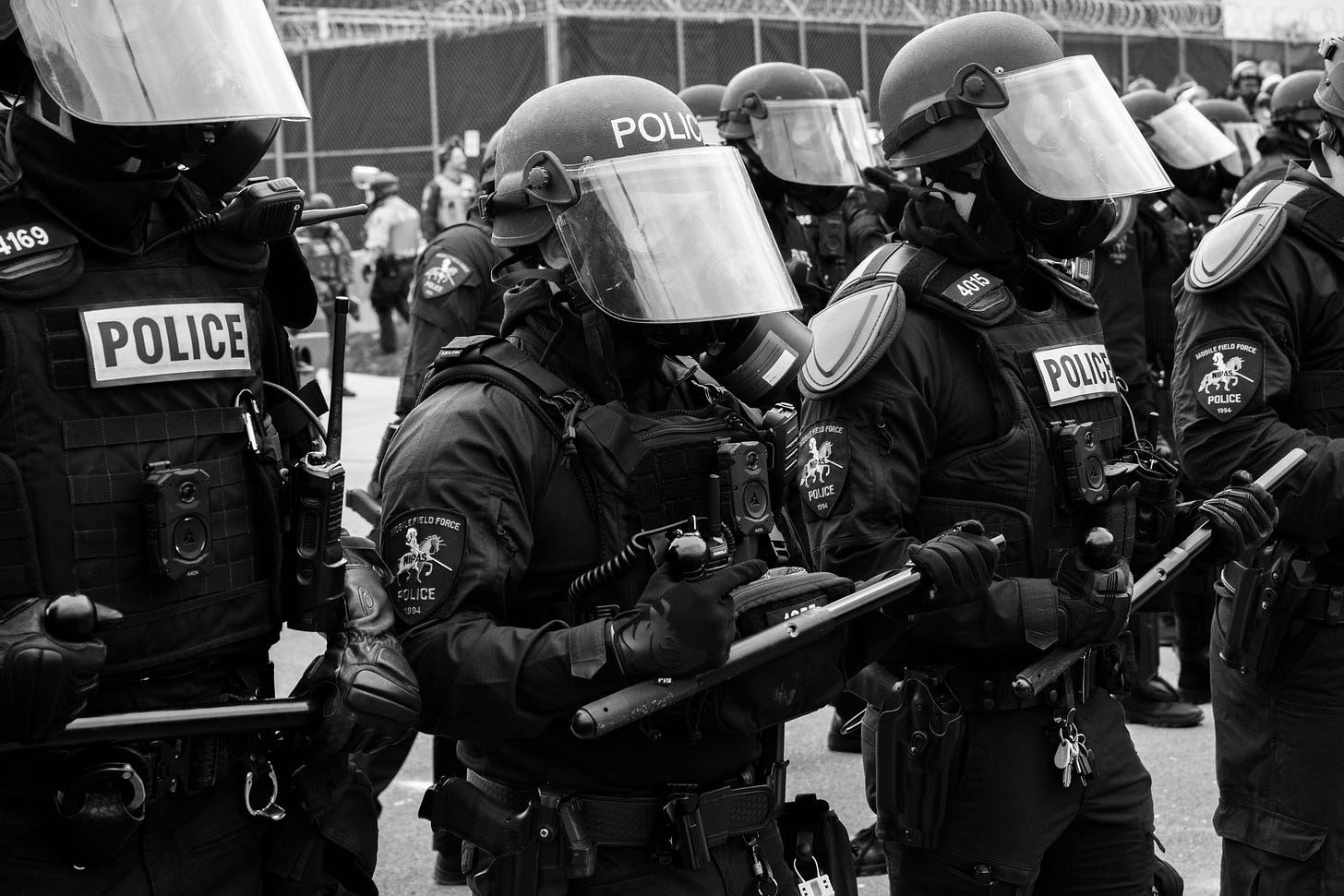


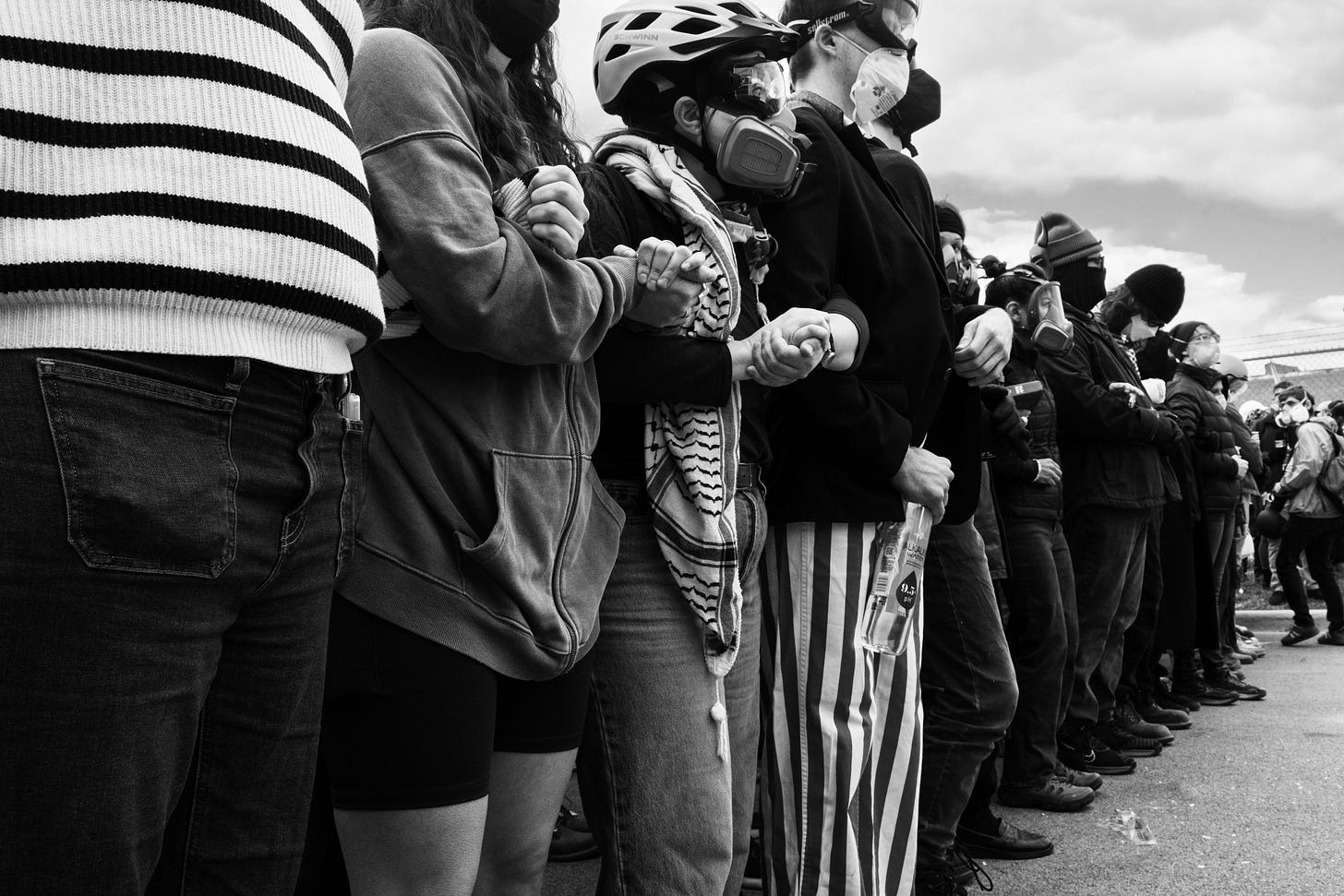
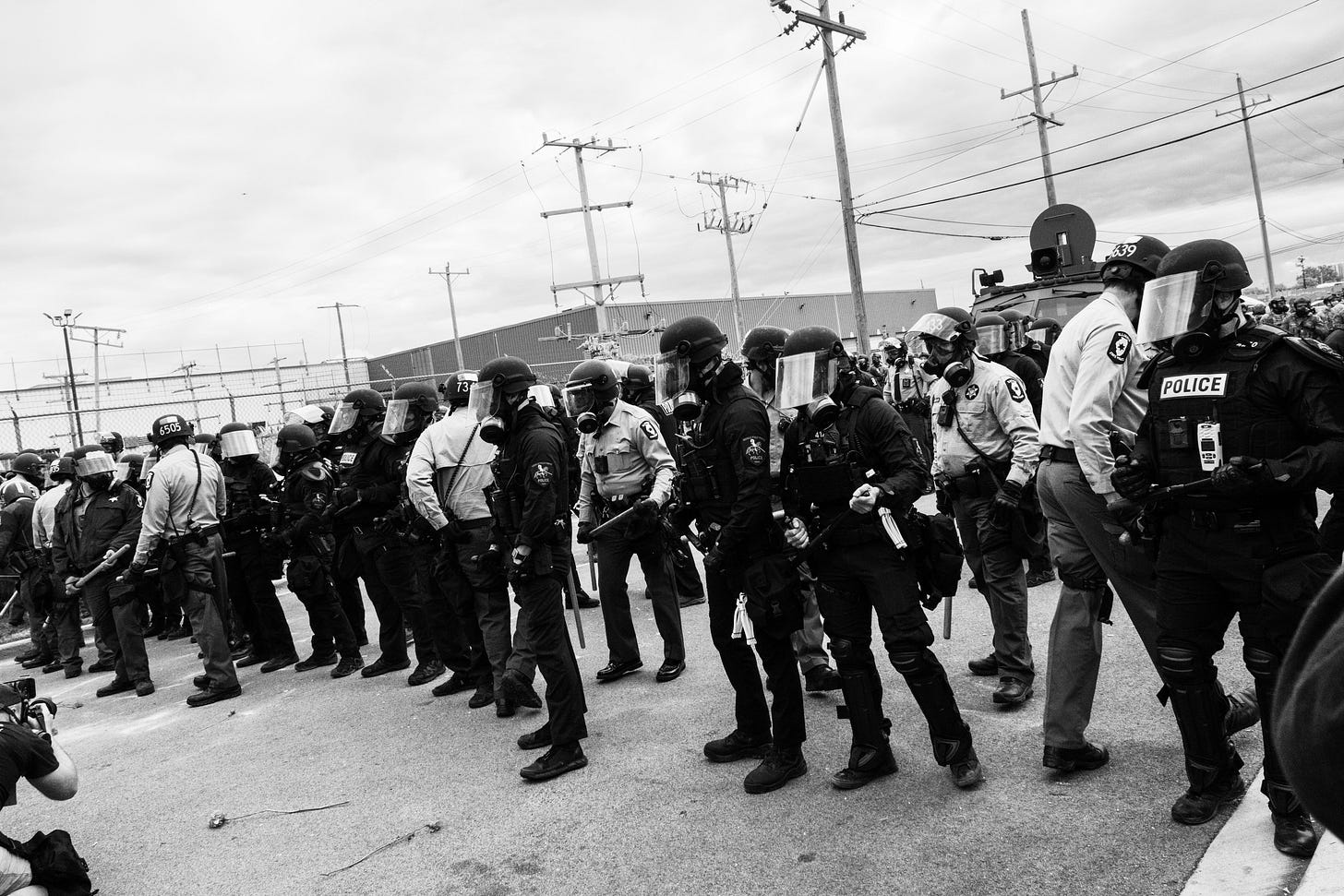

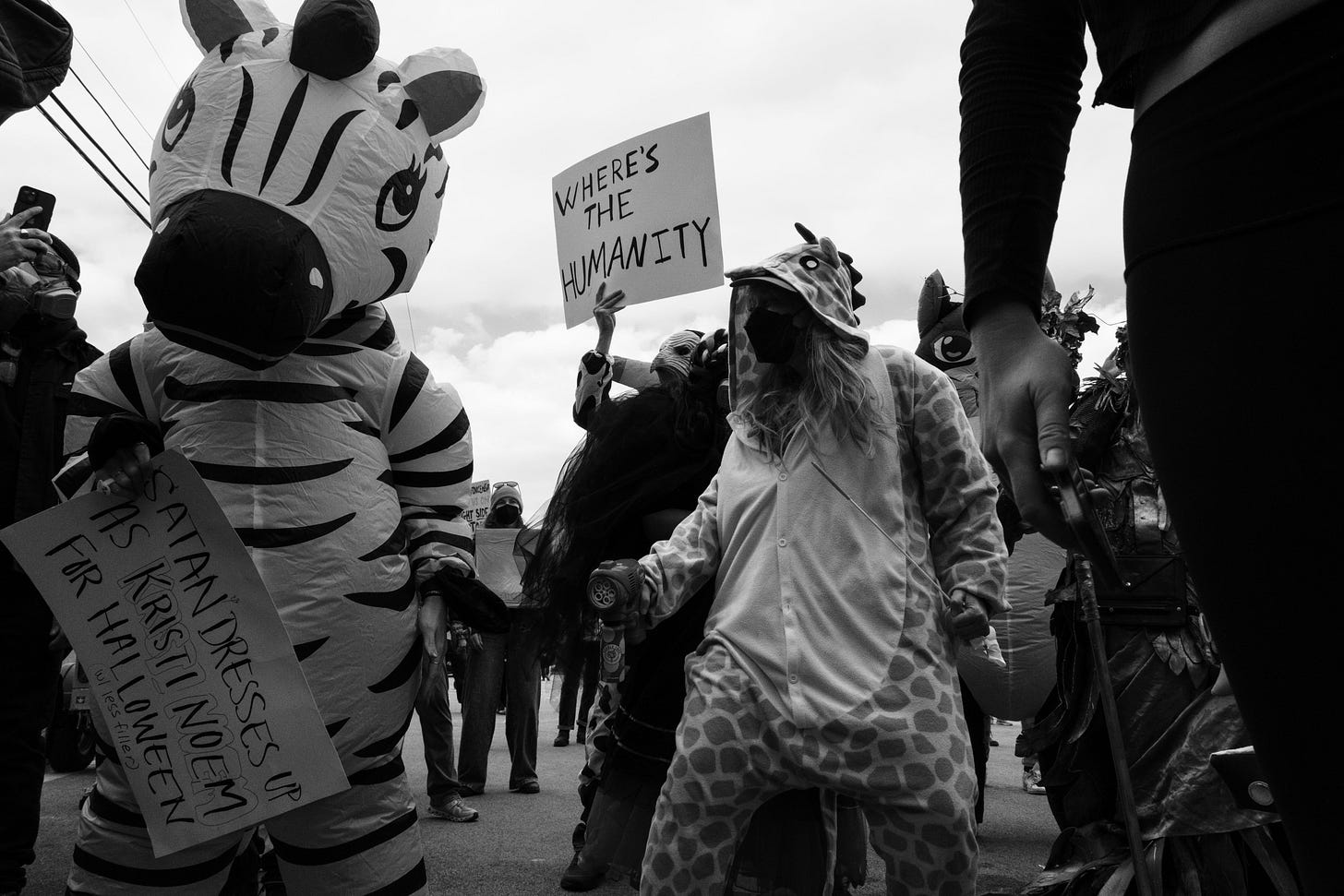

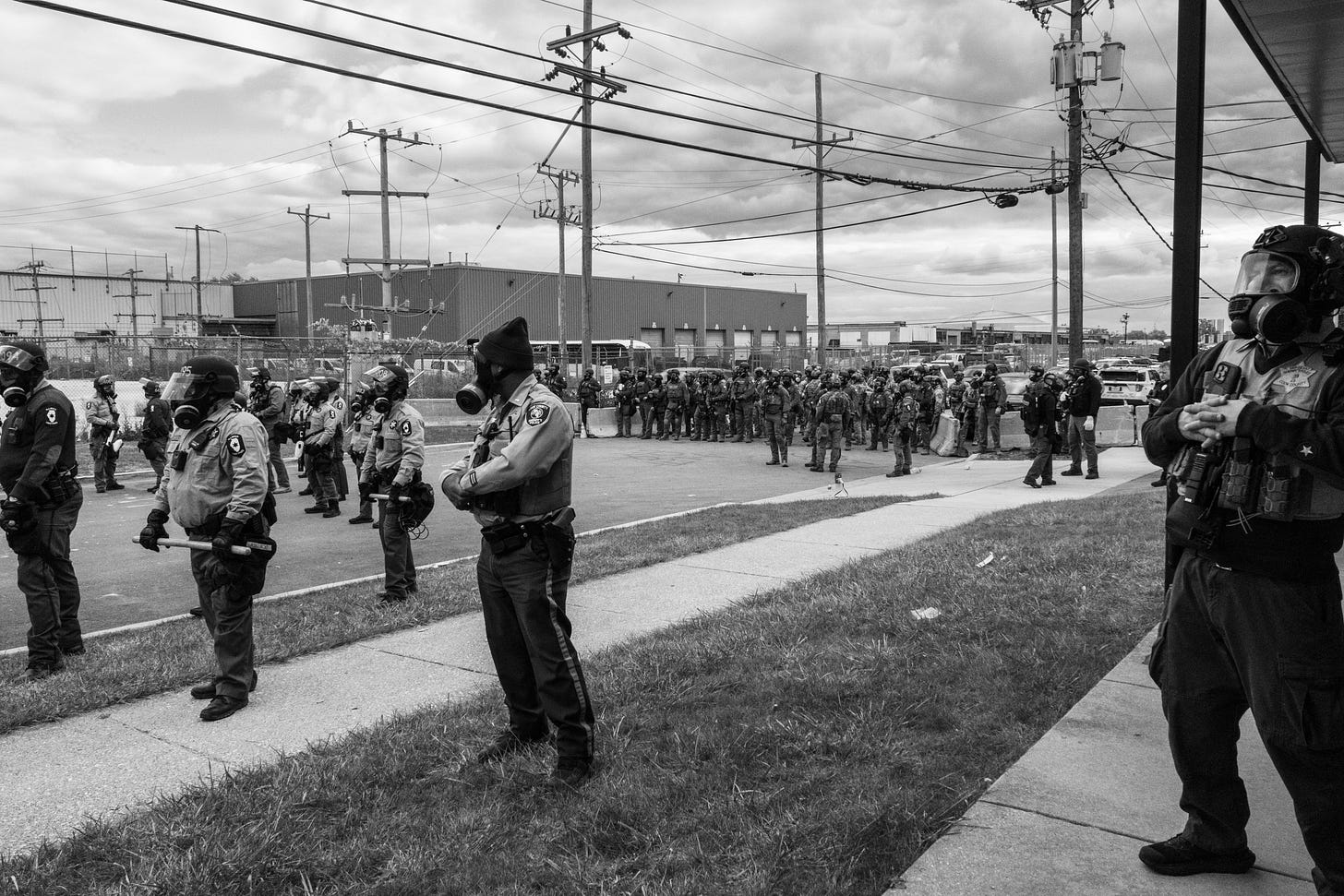




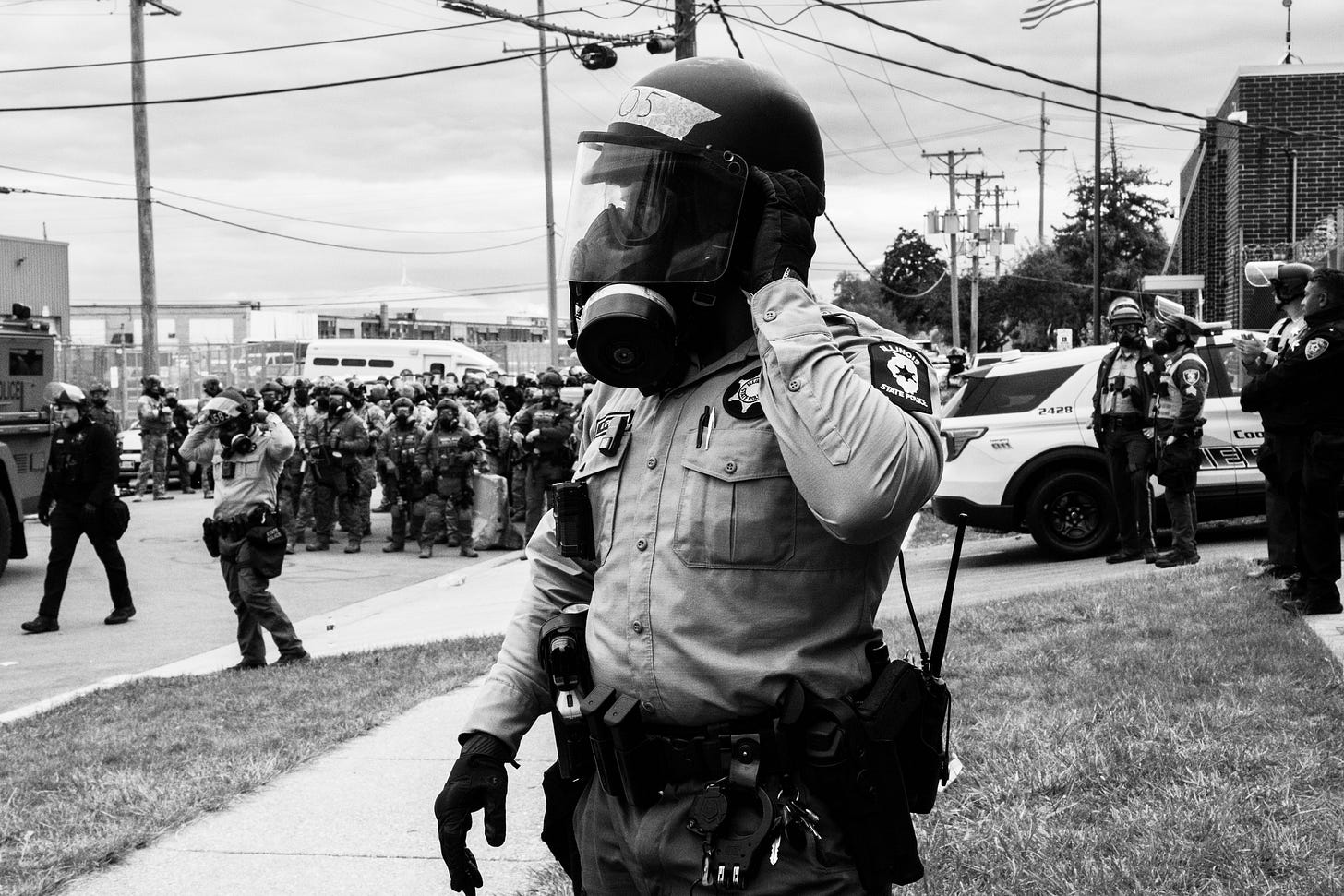

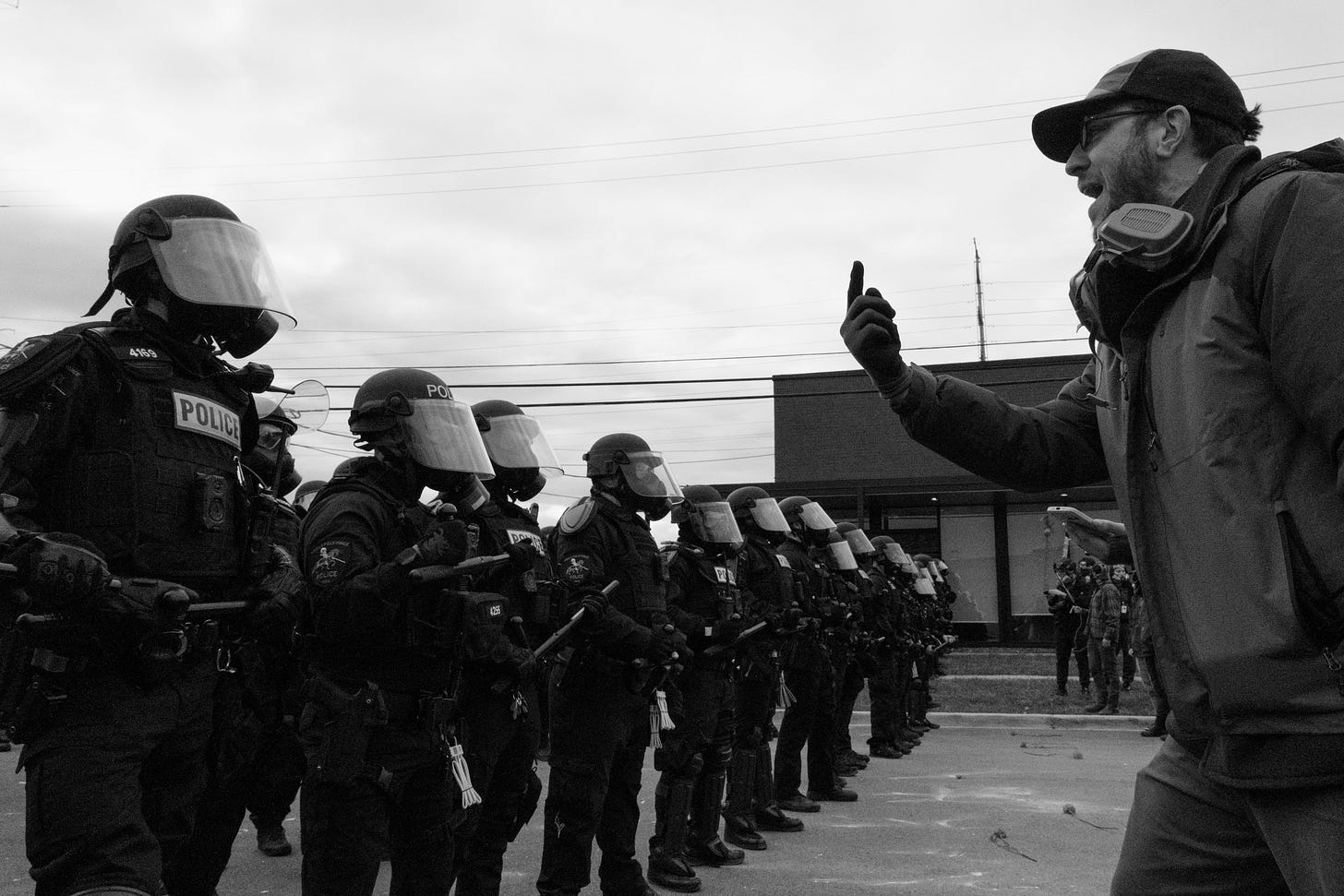

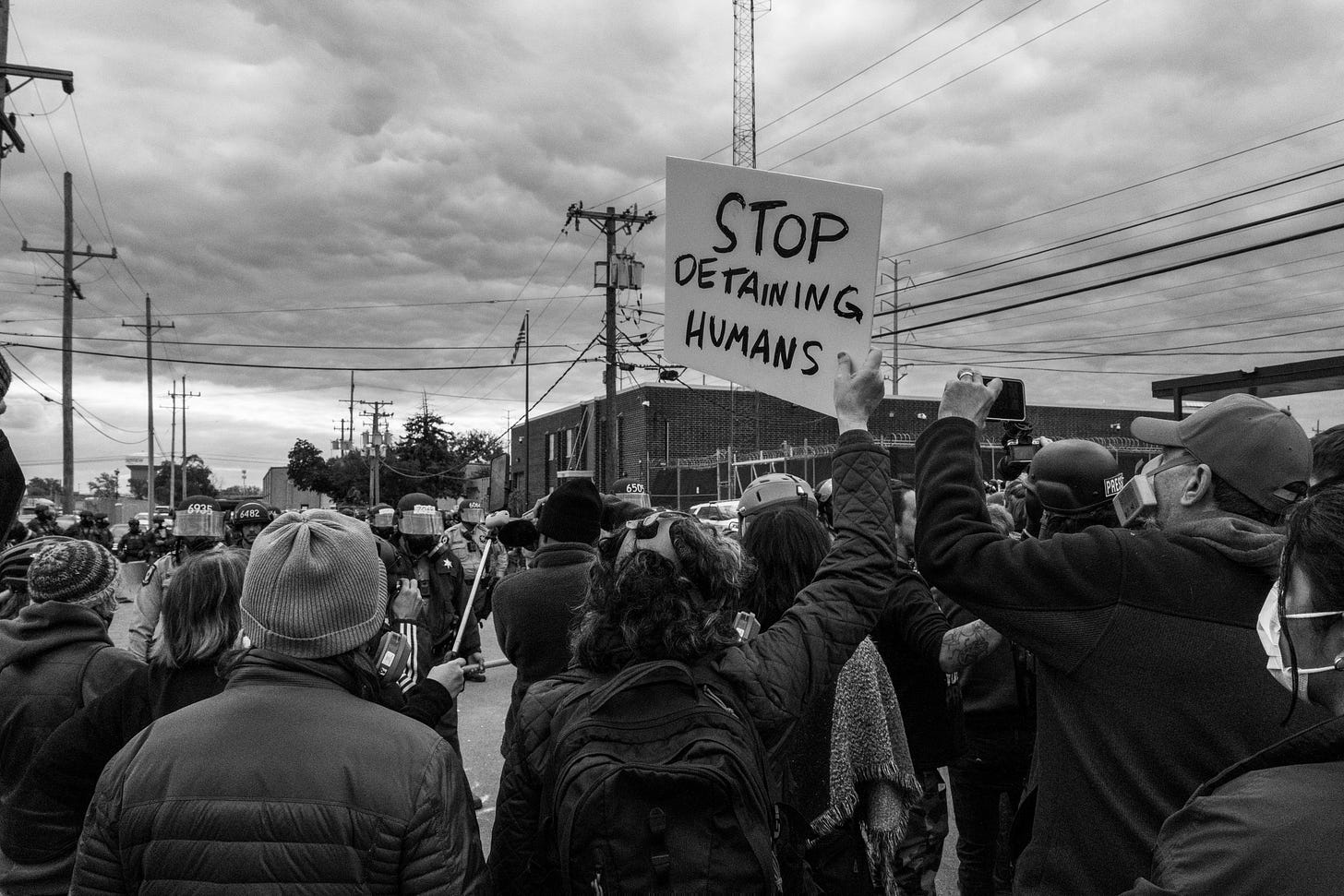


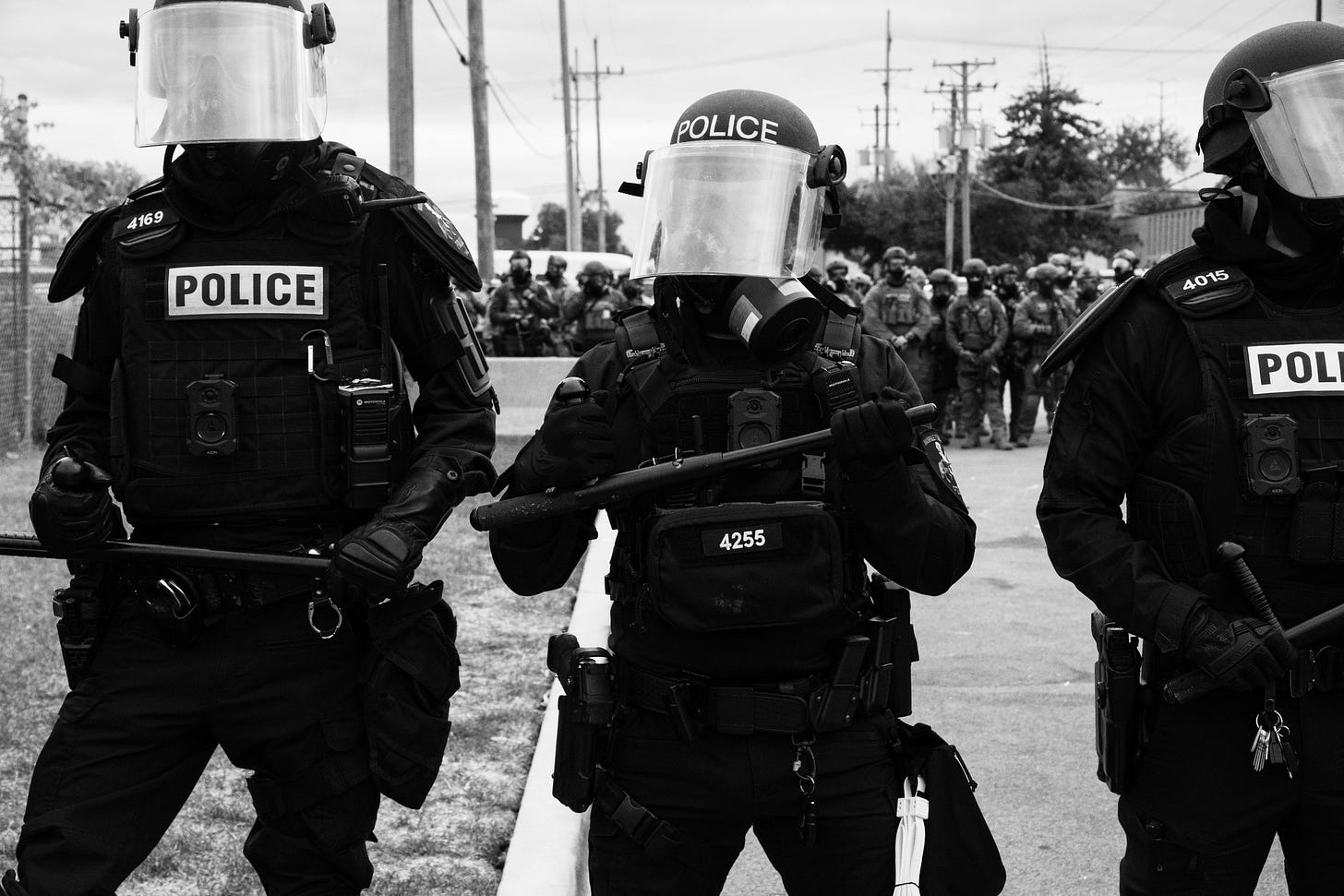


Scary -- reminiscent of 1968 in a sickening way.
And whole this army to protect kidnappers and masked criminals... it's so sad...